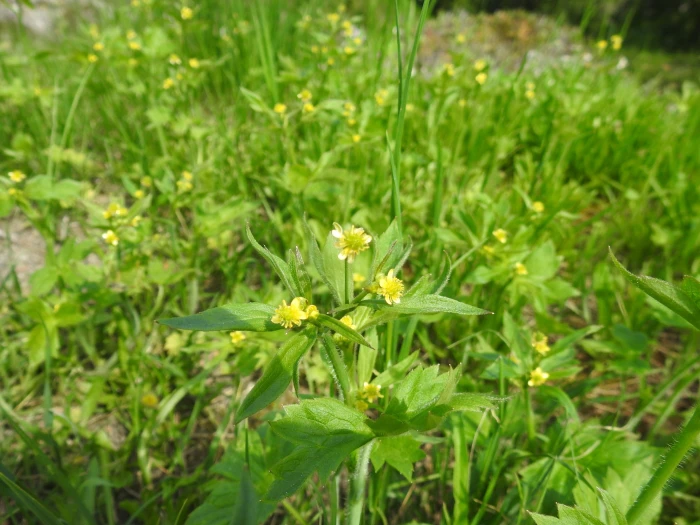Woodland Buttercup
(Ranunculus uncinatus)
Woodland Buttercup (Ranunculus uncinatus)
/
/

Steve Tuckerman
CC BY-SA 4.0
Image By:
Steve Tuckerman
Recorded By:
Copyright:
CC BY-SA 4.0
Copyright Notice:
Photo by: Steve Tuckerman | License Type: CC BY-SA 4.0 | License URL: http://creativecommons.org/licenses/by-sa/4.0/ | Rights Holder: Steve Tuckerman | Publisher: iNaturalist | Date Created: 2022-08-01T12:54:30-07:00 |

























Estimated Native Range
Climate Requirements
| • Precipitation | 56" - 67" |
| • High Temp. | 66°F - 83°F |
| • Low Temp. | 11°F - 35°F |
Summary
Ranunculus uncinatus, commonly known as Woodland Buttercup or Little Buttercup, is a perennial herb that is native to moist, shaded environments in western North America, ranging from Alaska to California and east to New Mexico. It typically grows in wet habitats such as forest streambanks, moist woodlands, and meadows, often forming part of the understory in riparian zones and mixed coniferous-deciduous forests. This species reaches a modest height of over 1.5 feet and features yellow flowers that are moderately showy, blooming from April to August. The leaves are deeply divided, contributing to the plant’s delicate texture.
Woodland Buttercup is valued for its bright yellow flowers and ability to thrive in shady, moist conditions, making it suitable for woodland gardens, shaded borders, and naturalized areas. It prefers cool, damp soil and does not tolerate drought well. Gardeners often use it to add color to challenging shady spots where other plants may struggle. While generally low-maintenance, it can be susceptible to powdery mildew and should not be overwatered to prevent root rot. It is not known for aggressive roots or significant disease problems, but care should be taken to ensure good air circulation to minimize fungal issues.CC BY-SA 4.0
Woodland Buttercup is valued for its bright yellow flowers and ability to thrive in shady, moist conditions, making it suitable for woodland gardens, shaded borders, and naturalized areas. It prefers cool, damp soil and does not tolerate drought well. Gardeners often use it to add color to challenging shady spots where other plants may struggle. While generally low-maintenance, it can be susceptible to powdery mildew and should not be overwatered to prevent root rot. It is not known for aggressive roots or significant disease problems, but care should be taken to ensure good air circulation to minimize fungal issues.CC BY-SA 4.0
Plant Description
- Plant Type: Herb
- Height: 0.5-1 feet
- Width: 0.5-1 feet
- Growth Rate: Moderate
- Flower Color: Yellow
- Flowering Season: Spring, Summer
- Leaf Retention: Deciduous
Growth Requirements
- Sun: Full Sun, Part Shade
- Water: Medium
- Drainage: Medium
Common Uses
Bird Garden, Erosion Control, Low Maintenance, Water Garden
Natural Habitat
Moist, shaded environments in riparian zones and mixed coniferous-deciduous forests
Other Names
Common Names: Little Buttercup, Hooked Crowfoot, Hooked Buttercup
Scientific Names: Ranunculus uncinatus, Ranunculus bongardii subsp. greenei, Ranunculus bongardii var. tenellus, Ranunculus greenei, Ranunculus lyallii, Ranunculus recurvatus, Ranunculus uncinatus var. typicus
GBIF Accepted Name: Ranunculus uncinatus